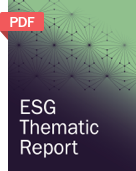Environment, Social and Governance (ESG) in Power Tools Industry
Power Tools include Electric Tools, Fuel-Powered Tools, Hydraulic Tools, Pneumatic Tools, and Power Actuated Tools. Of these, electric tools can be easily seen in households and in day-to-day life. As much as electric power tools have provided convenience of maintenance at doorsteps, there stands a risk of increasing consumerism in this sector. Utility of other categories lie in different sectors and industries. Depreciation of industry specific tools is still high, but the market is supported by a circular economy for such tools which gives other categories an edge from ESG standpoint. But when the electric power tools sector is magnified from ESG standpoint, after-life waste is the major challenge that is rising.
Electric tools can further be bifurcated into corded and cordless tools. Cordless tools have advantages over corded tools which is why cordless tools are taking over the market. Portability and reach make cordless tools popular in the market. In addition, DIY trends have become a marketing point for cordless electric tools.
Cordless tools are supported by Lithium-Ion (Li-ion) or Nickle-Cadmium (Ni-Cd) batteries and need a change after a few rounds of usage. This contributes to the disposal of batteries in the environment more rapidly resulting in waste generation. Lithium-Ion batteries are made up of cobalt, nickel, and manganese which are highly toxic and can contaminate water supplies. They can be deadly if not disposed of responsibly. Similarly, Ni-Cd batteries contain Cadmium which is again highly toxic for plants, animals and micro-organisms and can’t be broken down into less-toxic substances. Li-ion batteries can be recycled 100% and but Ni-Cd batteries can only be recycled close to 75%. Therefore, the cordless power tools market backed with consumerism can prove to be lethal for humankind without proper recycling infrastructure and conscience. Furthermore, due to negative environmental effects of these batteries, Sustainable Development Goals (SDGs) of Good Health and Well-Being (SDG 03), Clean Water and Sanitation (SDG 06), Life below Water (SDG 14), Life on Land (SDG 15) are ultimately getting affected by Power Tools Industry
ESG Trends
Power tools are mostly made up of aluminum, steel, copper, and plastics out of which everything is recyclable. But the biggest problem lies with the Li-Ion and Ni-Cd batteries. Hence, addressing this issue becomes inevitable from the environmental perspective. Infrastructure to recycle 20,000 mt of industrial and household Ni-Cd batteries is available globally. In furtherance, National Collection and Recycling Associations (NCRAs) are set up around the world to promote the recycling infrastructure for all kinds of batteries. These associations are focused on both public and industry-based battery waste. OECD also brings a list of recycling units for Ni-Cd batteries handy for all the players in the Power Tools Sector.
Countries like the US have come up with state specific legislators to address this waste challenge by issuing suitable bins for the general public. It can also be seen that companies like Toxco and Umicore have instigated the collection drives for Li-Ion batteries to give efficient results in recycling.
Growth of the Power Tools Market
The global power tools market size was valued at USD 32.3 billion in 2019 and is expected to grow at a compound annual growth rate (CAGR) of 4.2% from 2020 to 2027. Power tools market has seen a surge in demand which will eventually result in consumerism in this sector. As it is difficult to grow the recycling infrastructure as exponentially as demands for these tools, increasing usage of power tools by the general public becomes directly proportional to risk of landfill leachate from the batteries used in the tools.
越来越多的技术发明在这个部门also result in changing trends which make old models outdated. Therefore, products are seeing a discard sooner than later. This calls for a better circular economy for these tools so that all the recyclables can get collected in the recycling facilities.
Scope of the Power Tools Industry ESG Thematic Report
• Macro-economic and ESG-variable analysis of the industry, including regulatory, policy, and innovation landscape
• Key insights on infrastructure developments and ESG issues affecting the theme
• Identify key initiatives and challenges within the industry
• Identify ESG leaders within the industry
• Understand key initiatives and the impact of companies within the sector to fuel an informed decision-making process
• Analysis of industry activities based on multi-media sources, including significant controversies and market sentiment
Key Benefits of the Power Tools Industry ESG Thematic Report
• Developing a comprehensive understanding of macro-economic, Policies & Regulations and innovations affecting the power tools market, globally
• Key insights into environmental developments and ESG issues affecting the theme
• Identifying ESG risks and opportunities to business among leading players in the market
• Obtaining a clear and relevant understanding of company actions, progress, and impact and find opportunities for investment into the sector


